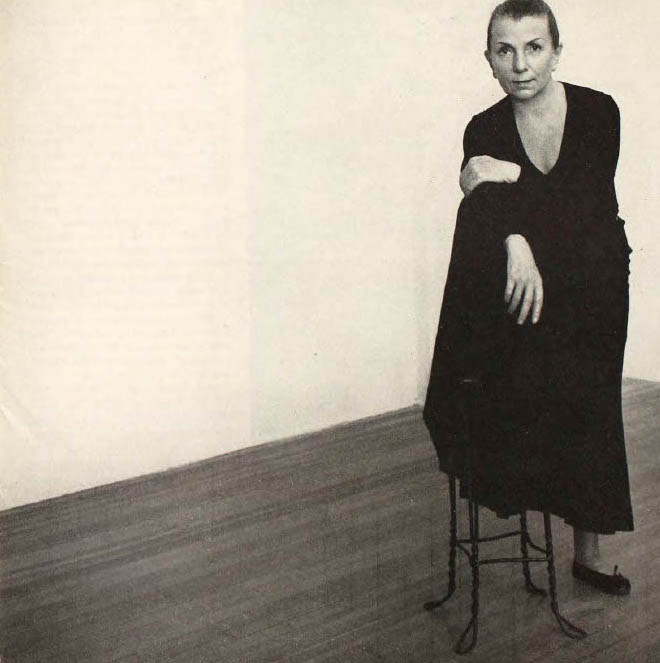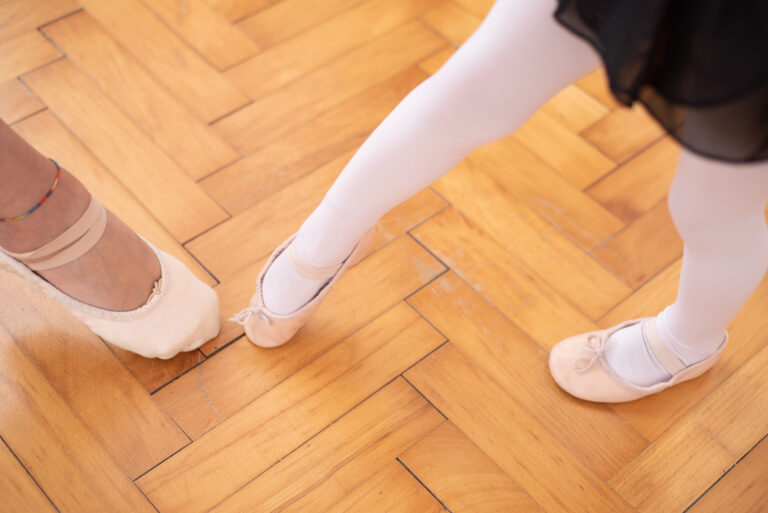
As a young student, Becky Erhart Moore did not go on pointe with the rest of her class. “My teacher felt I wasn’t ready, so I wore flat shoes when everyone else wore pointe shoes,” she says. “My mom had to deal with my tears for weeks!” Moore, who is now artistic coordinator and faculty member at Marin Ballet in California, says that the setback she experienced as a child motivated her to work even harder. “When I finally went up on pointe with my class, it was that much sweeter.”
Students who progress together year after year often develop a tight bond. They grow through the levels sharing a love of dance and strong sense of community. But sometimes one or two students do not progress fast enough to advance with the rest of their peers. Holding these dancers “back” will ensure their safety and proper development, but it can also discourage them from staying in the program. For others, like Moore, the experience might inspire them to work even harder. To navigate this common issue, teachers and studio owners can facilitate opportunities to nurture students’ friendships outside the studio and find creative ways to keep peers together, despite varying abilities.
Accommodate Peer Groups
Some studios see enrollment numbers drop as students get older, when schedules get tighter and the training becomes more rigorous. But keeping a class together and allowing dancers to build friendships over time can be beneficial for both the students and the school. “The experience of them being together socially keeps them dancing way longer,” says Christy Curtis of CC & Co. Dance Complex in North Carolina. “They find that the journey is about their connection with each other and dance, rather than what their career path will be.” Curtis tries to keep dancers with their peer group and will often teach a class with varying levels if the dancers are relatively close in age and ability. Her studio also offers several different company options to accommodate the growing range of interested dancers.
Similarly, Marin Ballet offers designated classes for each grade level until 10th grade. “The assumption is that you go to the next level each year,” says Moore, “but in any given class, you’ll find kids who might be a year older or younger. Not all students are ready to move at the same time.” If a dancer needs to repeat a level, Moore tries to make that adjustment early in the dancer’s training. “Once they get into middle school and come four to five days a week, the attachments they have are so strong. It’s hard to hold a kid back who’s in eighth grade.”
Counsel Each Dancer
Talking to dancers about repeating a level can be difficult. “Everyone wants to move up right away, like instant gratification, even if they don’t come that often,” says Reagan Messer, executive and artistic director of the dance program at MoCo Arts in New Hampshire. “But a student taking one class a week isn’t going to move up as fast as someone taking two classes.” To help parents and students better understand the amount of time needed in each level, Messer will liken the schedule to academics. “One ballet class a week for 35 weeks is basically like 3 1/2 weeks of school. You don’t move from fourth grade to fifth grade in just 3 1/2 weeks!”
Messer often sees students get frustrated or discouraged because they’re not ready to progress with their peers. “I talk to the students and reassure them that they are in the right place for their growth,” he says. “They have to understand that there’s a greater risk for injury if the class is moving too fast and they’re not ready for all the steps.” If the dancer then shows great progress over the next few months, Messer might promote the dancer midyear.
Moore will also meet with parents directly and emphasize that dancers progress at different speeds. She notes that while the brain might understand the material, it might not yet be able to communicate the information throughout the body. Of course, some children might not be interested and decide to stop dancing instead of working to achieve the next level of training. “Last year, a third of the classes I taught were asked to repeat, and half of those dancers quit,” she says. “But if you can counsel them throughout the year and help them with extra exercises and focus, they’ll either make an effort to reach the next level or start to transition out of the school.”
Build Community
Curtis says her studio was built on the idea that students enjoy the experience together, and she provides opportunities for dancers to connect. “We’ll rent out a movie theater and show a dance movie twice a year,” she says. “We also have a lot of events, like an Earth Day celebration, and they all just go and dance with the community.” For graduating seniors, Curtis hosts parties throughout the year and even acknowledges the dancers’ parents for their longtime commitment and support.
Messer acknowledges that smaller schools don’t always have the bandwidth to plan for additional community-building events. Instead, he encourages dancers to experience different dance styles and theater programs so they can build friendships and gain an even more well-rounded dance education. “We promote that kind of crossover, and that’s where you see more social interaction,” says Messer. “We try to keep a family atmosphere and support each other. Less than one percent of our students will be professional dancers, so it’s the life lessons that will help them be successful in other walks of life.”

Graduating seniors at CC & Co. Dance Complex
Photo courtesy of CC & Co. Dance Complex
Cohort Class Structure at CC & Co. Dance Complex
Christy Curtis, founder and director of CC & Co. in North Carolina, keeps peer students together in classes during the week. If students want to pursue a career in dance and seek more intensive training, Curtis provides or recommends these additional opportunities:
- Extra classes on the weekends
- Private lessons or small-group work with guest artists
- Summer intensive programs
- Additional studio hours for solo rehearsals
“Most of the dancers here just enjoy their time together,” says Curtis. “Once you have that, it’s likely they’ll stick with it.”




